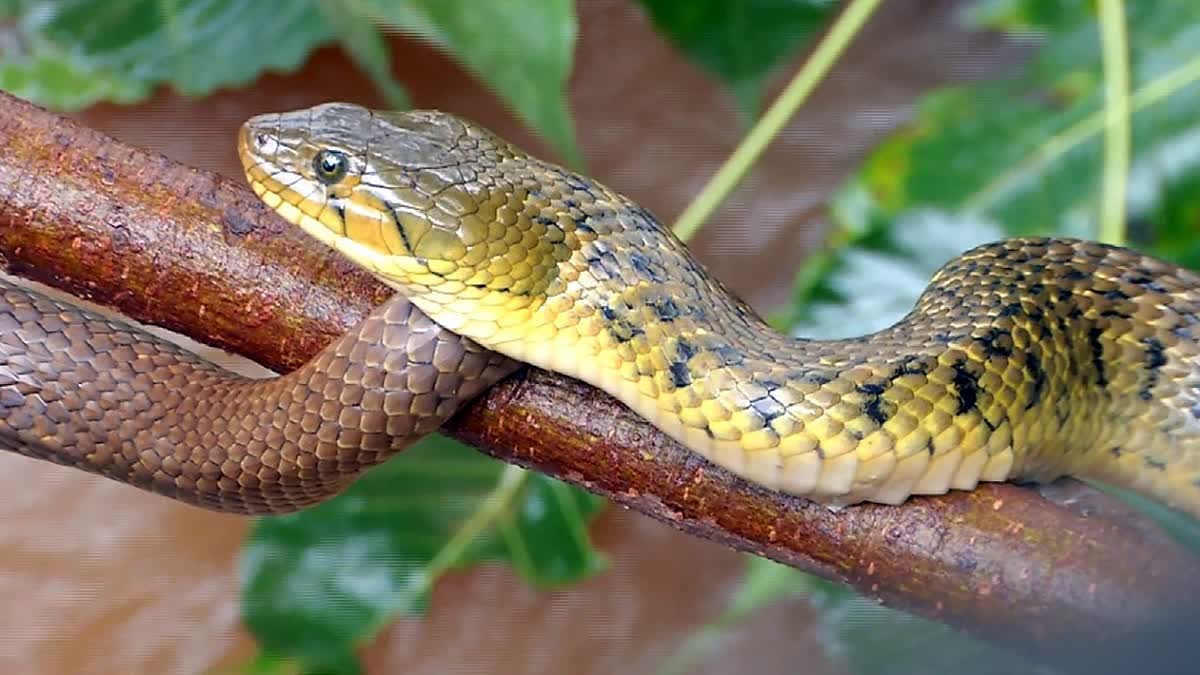Hyderabad: World Snake Day on July 16th urges increased awareness of the wide variety of species around the world. With around 3,789 species, finding a snake that fascinates you or that was unknown to you previously won't be difficult. World Snake Day seeks to create awareness about the important role snakes play in maintaining the ecological balance and promoting conservation efforts. Despite the negative perception and myths surrounding them, snakes are essential in controlling rodent populations and preventing the spread of diseases. India is home to around 300 snake species, and World Snake Day is a great time to promote the importance of snake conservation and dispels misconceptions.
World Snake Day History
Although the origins of this observance are not well-documented, the significance it holds in India can be traced back to the country's rich cultural heritage and mythology. Indian mythology showcased snakes, also known as Nagas, as sacred beings. Given the variety of snake species found in India, including the Indian Cobra, King Cobra, and Russell's Viper, this observance aims to draw attention to the declining populations of these species due to habitat loss and human-animal conflict. In recent years, initiatives like snake rescue and rehabilitation have been instrumental in saving many snake lives and raising awareness about their importance in the ecosystem.
In India, World Snake Day is observed through various educational and conservation activities such as awareness campaigns, snake awareness workshops, and exhibitions. These events aim to educate people about the essential role snakes play in the ecosystem, their proper handling, and the importance of their conservation. Nature clubs, educational institutions, and non-governmental organizations actively participate in these events, organizing sessions led by wildlife experts and snake handlers to promote better understanding and appreciation for these reptiles. World Snake Day is observed annually on July 16.
World Snake Day facts
Snakes are masters of disguise, skilled hunters, and champion eaters. Here are awesome facts you may not have known about these carnivorous reptiles.
According to National Geographic, about 600 species of snake are venomous, and only about 200 seven percent are able to kill or significantly wound a human .
Snakes are capable of swallowing animals up to 75%-100% larger than their own heads.
According to the latest count, there are 3,789 snake species, making them the second largest group of reptiles after lizards. They are divided into 30 different families and numerous subfamilies. Australia is home to approximately 140 of them.
In Indian culture, the cobra is considered the king of serpents and is believed to possess incredible powers. The cobra is often referred to as Nag or Naga in Hindu mythology, and many stories revolve around these powerful beings, who are sometimes depicted as half-human and half-snake.
Lord Shiva, one of the most important gods in Hinduism, is often depicted with a snake around his neck, symbolizing his power over death and rebirth.
Ever wondered why snakes might give you an eerie feeling? They don’t have eyelids! This means they don’t blink and have to sleep with their eyes wide open. Instead of eyelids they have a thin membrane attached to each eye to protect them. The membrane is called the ‘brille,’ which in German means glasses.
Snakes do have nostrils, but they don’t use them to smell. Instead they have evolved to smell with their tongue and by using their Jacobson’s organ in the roof of their mouth. Their smell is quite excellent and has also been described as “smelling in stereo”. They have a forked tongue and multiple receptors able to pick up different amounts of chemical cues.
Imagine a snake moving through the grass. What do you picture? The well-known s-movement? This wouldn’t be surprising, because this is the most common form of locomotion in snakes, also known as lateral undulation. But snakes have four other types of movement. Arboreal snakes, for example, use a form of locomotion which uses seven times more energy, called concertina. There is even a special locomotion used for when a snake tries to escape on a smooth surface, known as slide pushing.
Most snakes lay eggs, but some species – including sea snakes – give birth
Snakes are mostly solitary, except during mating season.
If snakes could put a “leave me alone” sign on their bedroom door, they probably would.
Outside of Antarctica and the North and South poles, snakes are found nearly everywhere on Earth except for Greenland, Iceland, Ireland, and New Zealand.
Some sea snakes can breathe partially through their skin, allowing them to stay underwater longer.
Snakes are bony – they can have up to 1,200 bones.
Snake scales (and rattlesnake rattles) contain keratin – the same substance found in human hair and nails.
Some snakes have girl power: the tiny Brahminy blind snake, or flowerpot snake, is the only snake species made up solely of females, meaning they can reproduce all on their own.
How can snake help us?
Snakes serve critical role as predators, as preys, as ecosystem engineers, and provide economic and therapeutic benefits to humans
